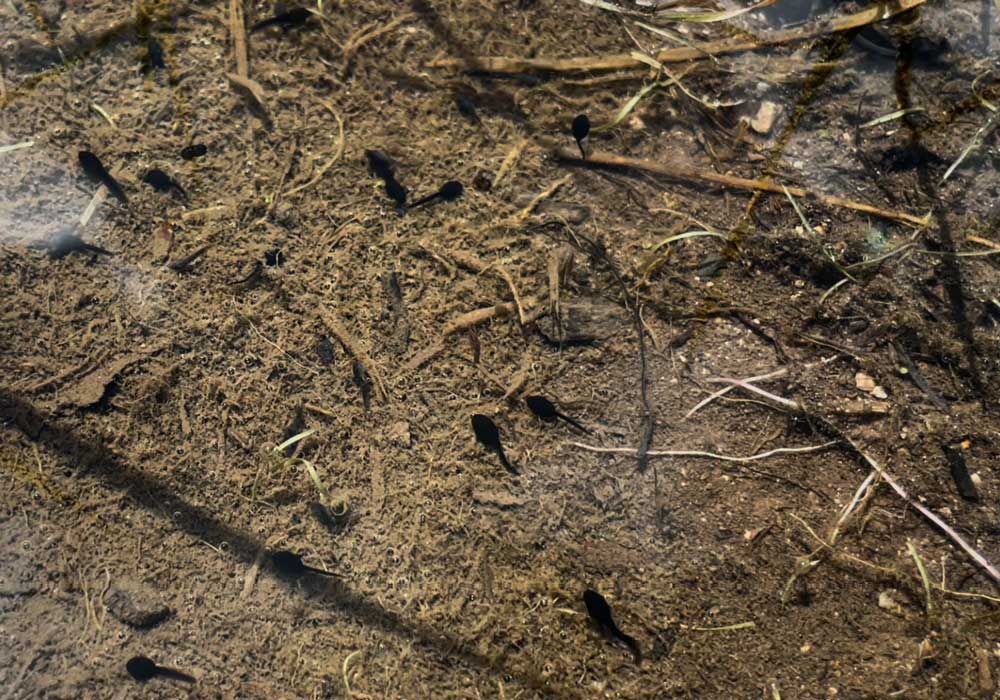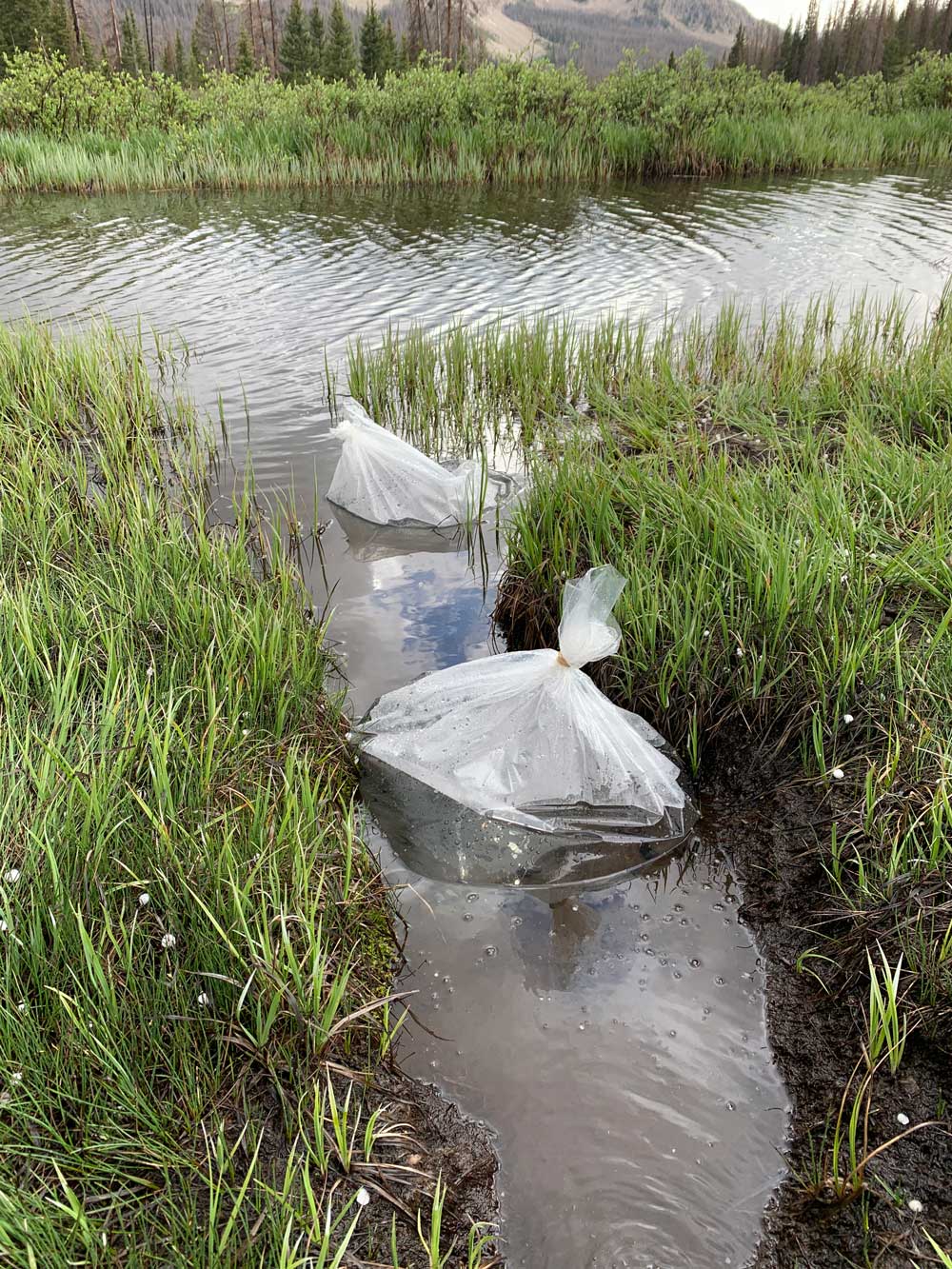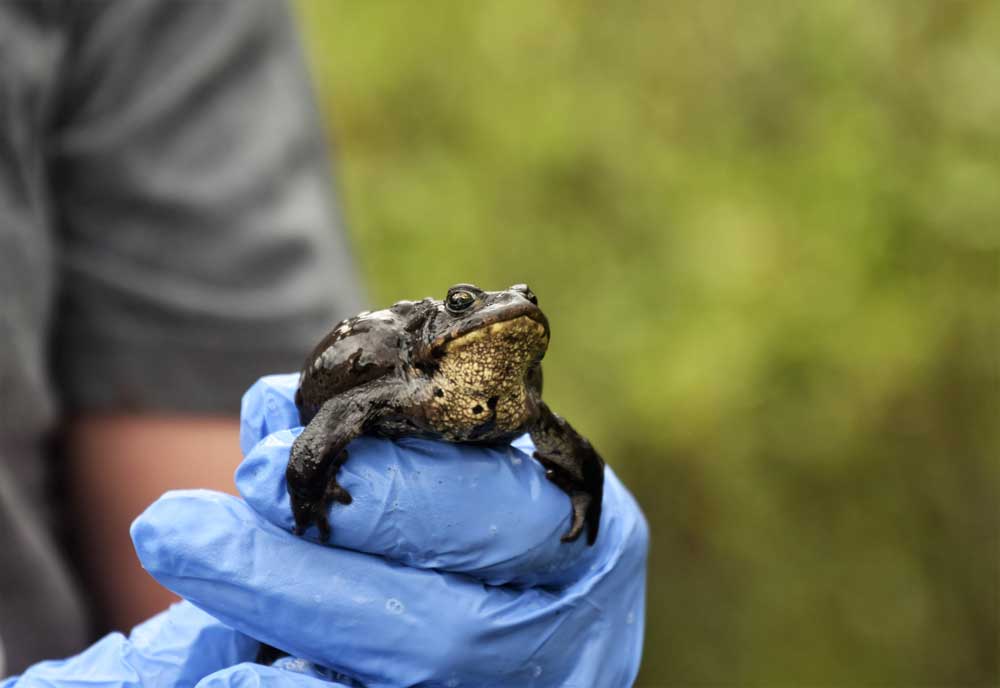The toad has experienced decline due to factors such as the chytrid fungus, which is devastating amphibian populations around the world.
Boreal toad (Anaxyrus boreas) tadpoles, an amphibian that is listed as endangered in the state of Colorado have been discovered in the town of Pitkin, which is a translocation site for the species set up by the state. The toad has experienced decline due to factors such as the chytrid fungus, which is devastating amphibian populations around the world.
“This is a really special day. We have been reintroducing toads at this site since 2018, and this is the first time that we have observed wild reproduction occurring,” Daniel Cammack, who with Colorado Parks and Wildlife native aquatic species biologists have been working to restore the wild populations, said in a press release announcing the discovery.”
The town sits at more than 11,500 feet above sea level and was identified in 2013 as an ideal potential habitat for the species. The state, along with U.S. Fish and Wildlife Service, U.S. Forest Service, Bureau of Land Management and National Parks Service, the Denver Zoo Conservation Alliance, have worked for more than 20 years researching why the species is in decline. And in doing so formulated a captive breeding program to help with the wild populations.

Tadpoles from naturally reproducing boreal toads were discovered by Colorado Parks and Wildlife native aquatic species biologists in July 2024 at a reintroduction site the agency began stocking with the state endangered species in earnest six years ago. Boreal toads reach breeding maturity at roughly age 6. Rachel Jones/Colorado Parks and Wildlife
“The boreal toad is a truly unique and resilient amphibian,” Cammack said. “We are up at 11,500 feet, at timberline practically. They gut out big winters covered by multiple feet of snow and experience only three to four months of warm growing season. They are an integral part of the landscape, as far as I’m concerned. They were ubiquitous once in Colorado in this habitat. With chytrid fungus now being the primary cause of decline, we don’t have that many populations of boreal toad remaining. For us to get something else going here is really important.”
Cammack, a native aquatic species biologist for CPW, has searched for the boreal toad and ideal translocation sites in southwest Colorado and says the discovery of the tadpoles at Pitkin as a highlight in his career.
“These are the native species that were historically abundant and so common that it would have been hard to imagine this major decline,” Cammack said in the statement. “As someone who grew up in Colorado and loves wildlife, I wish I could jump in a time machine and experience these ecosystems before they faced these major threats. No doubt, critters like boreal toads were here in force.

Boreal toad tadpoles raised at the Denver Zoo are prepared to be released into a translocation site in June 2022 above Pitkin, Colorado. The oxygenated bags are placed in the water where they are about to be released to acclimatize to the difference in water temperature. John Livingston/Colorado Parks and Wildlife
“Unfortunately, they have since declined so far that they represent only a shadow of the past. It’s a mandatory crusade, in my opinion, to conserve the fragments that remain and keep these creatures represented on the landscape. Like all native creatures, they have an inherent right to exist. Our story and identity as Coloradans are more intact when these populations thrive.”
Boreal Toad Information
The boreal toad is a subspecies of the western toad (Anaxyrus boreas) and is in decline due to such factors as habitat destruction and the Chytrid fungal disease that has devastated amphibian populations worldwide. It grows to about 4 inches in length and is an omnivore, feeding on insects, aquatic and non aquatic plants and algae. The species lives in high altitude lakes, marshes, and ponds at elevations from 8,000 to 12, 000 feet in elevation. Several distinct pockets of the amphibian can be found in the western United States and as far north as southern Alaska.



